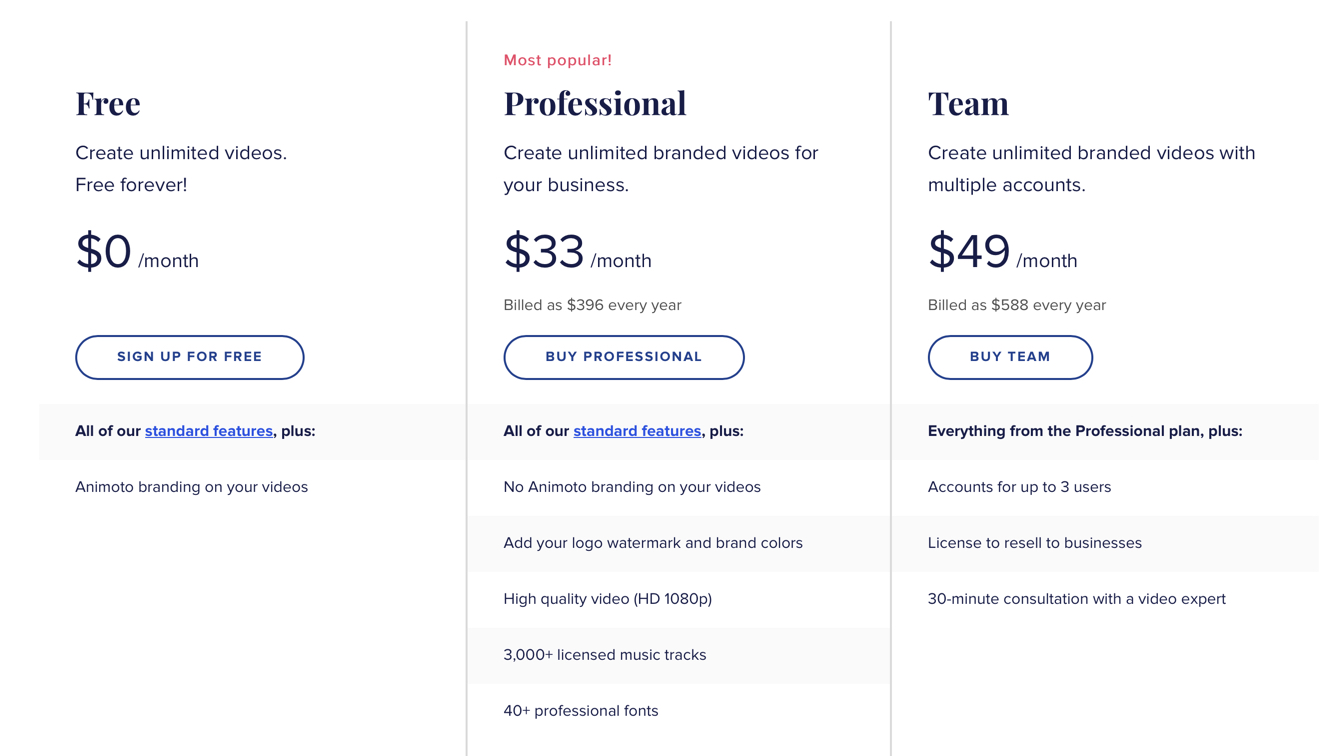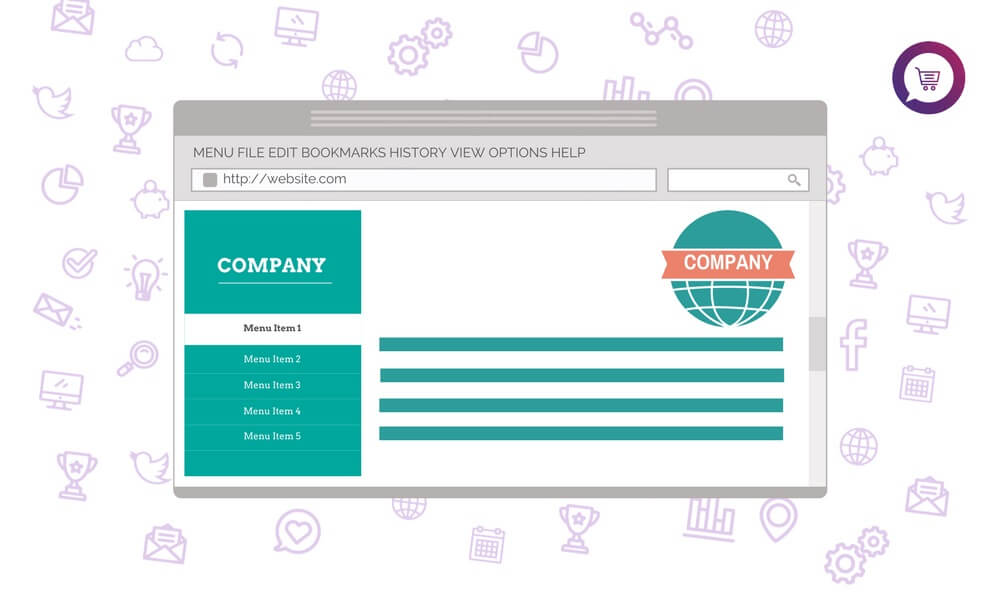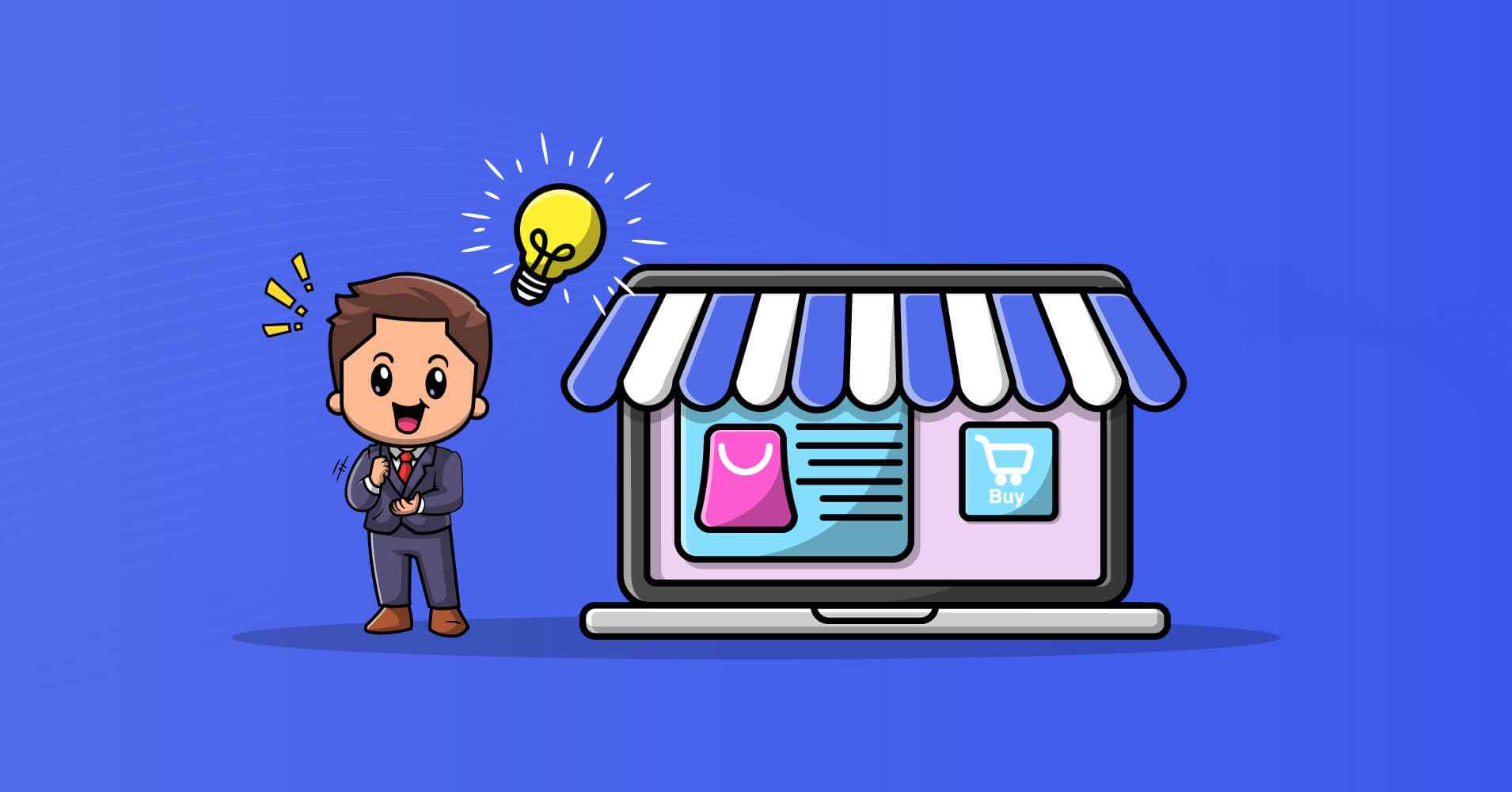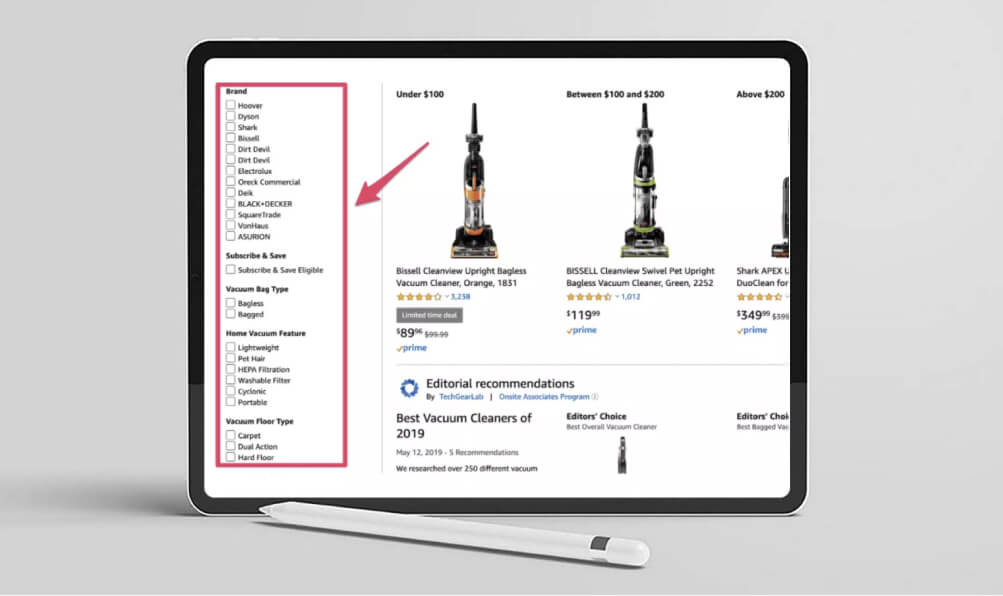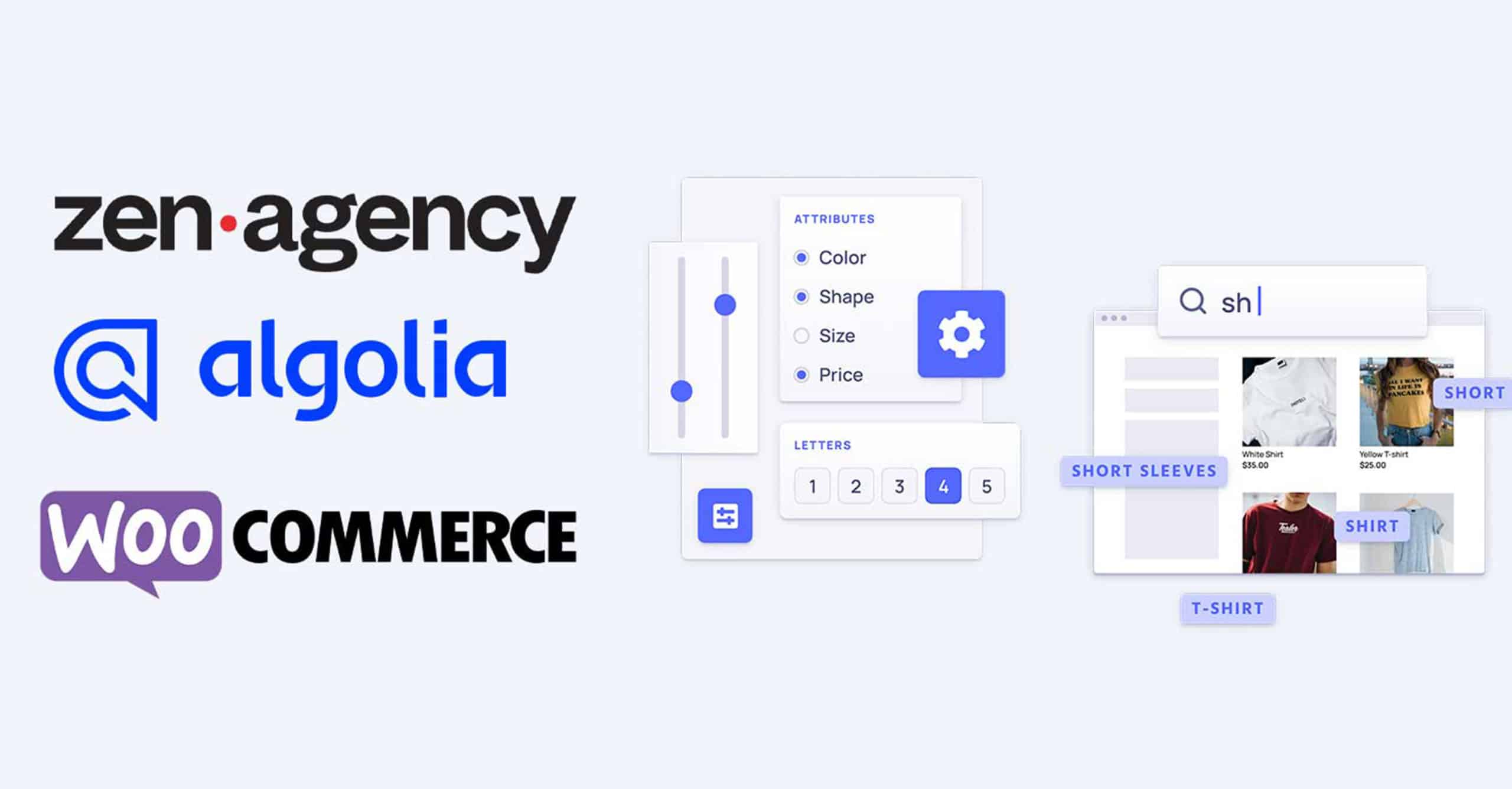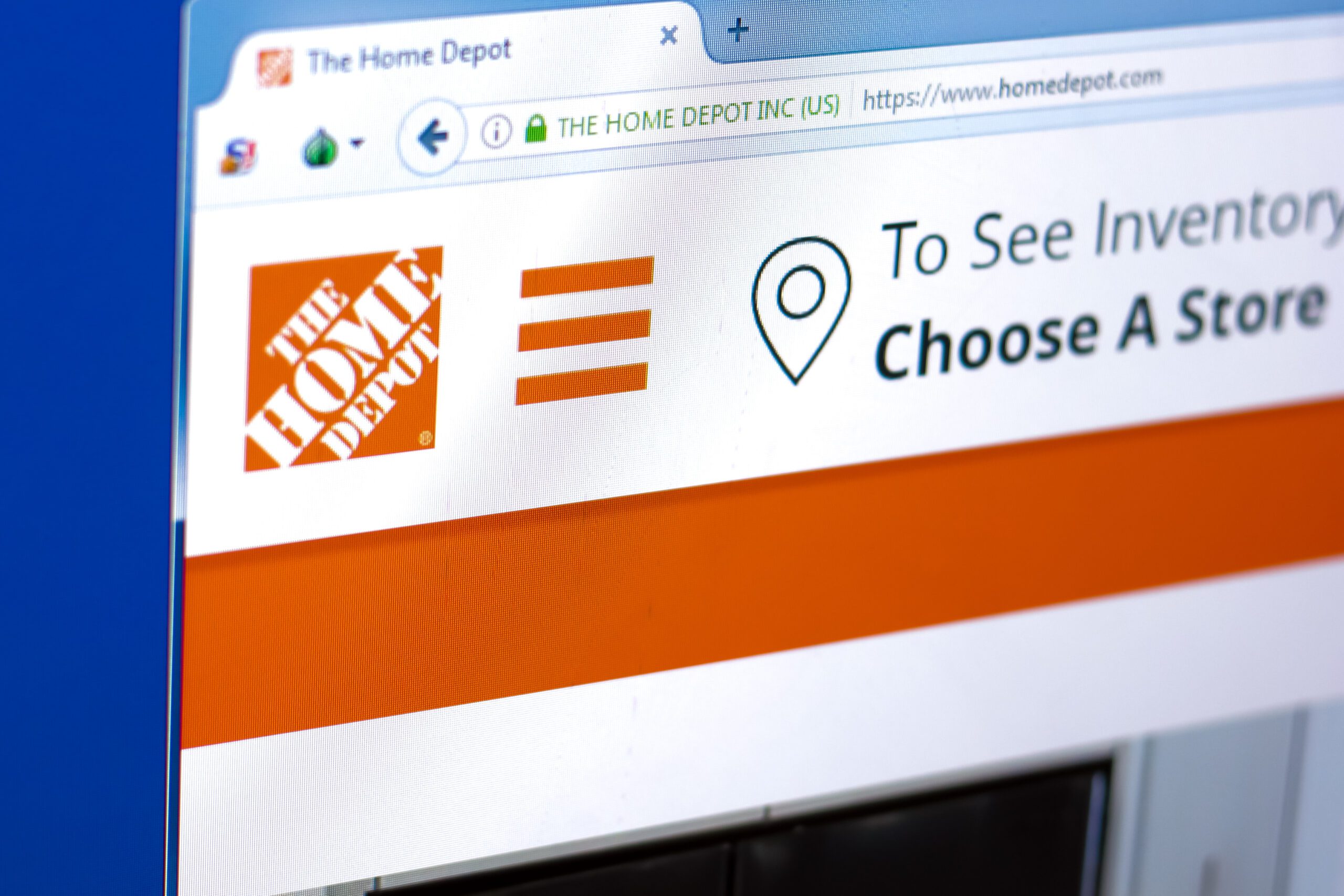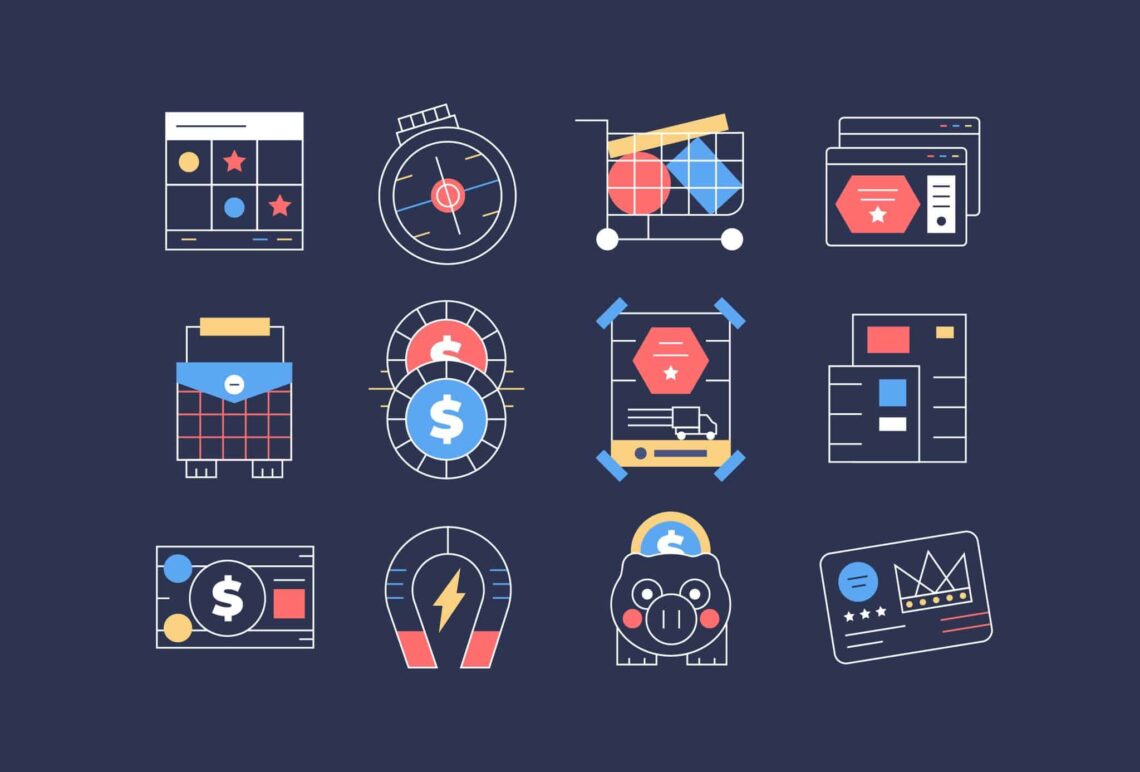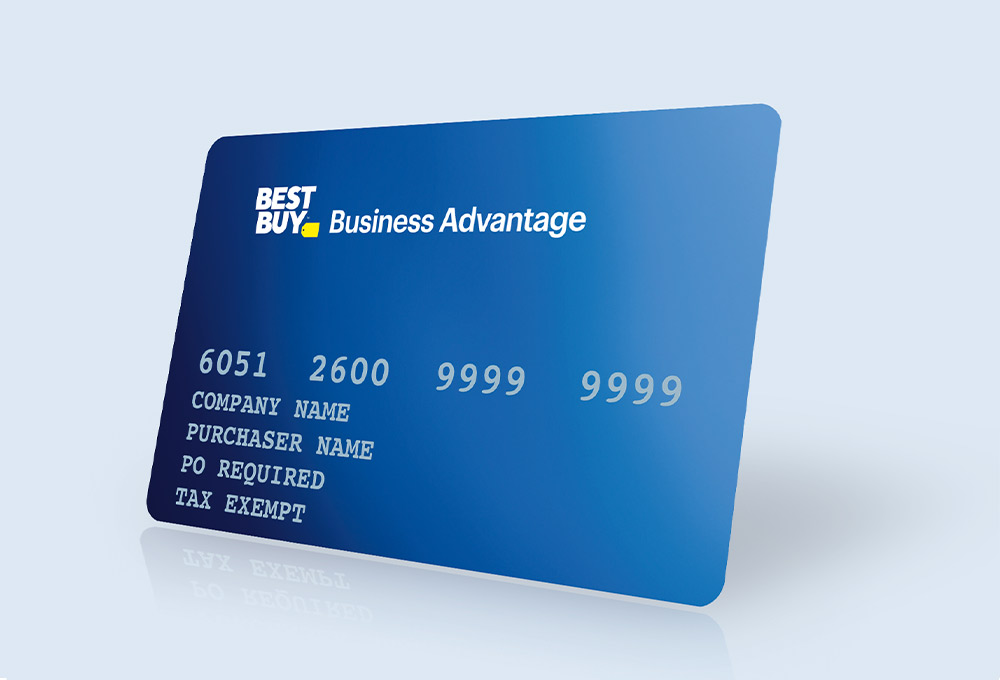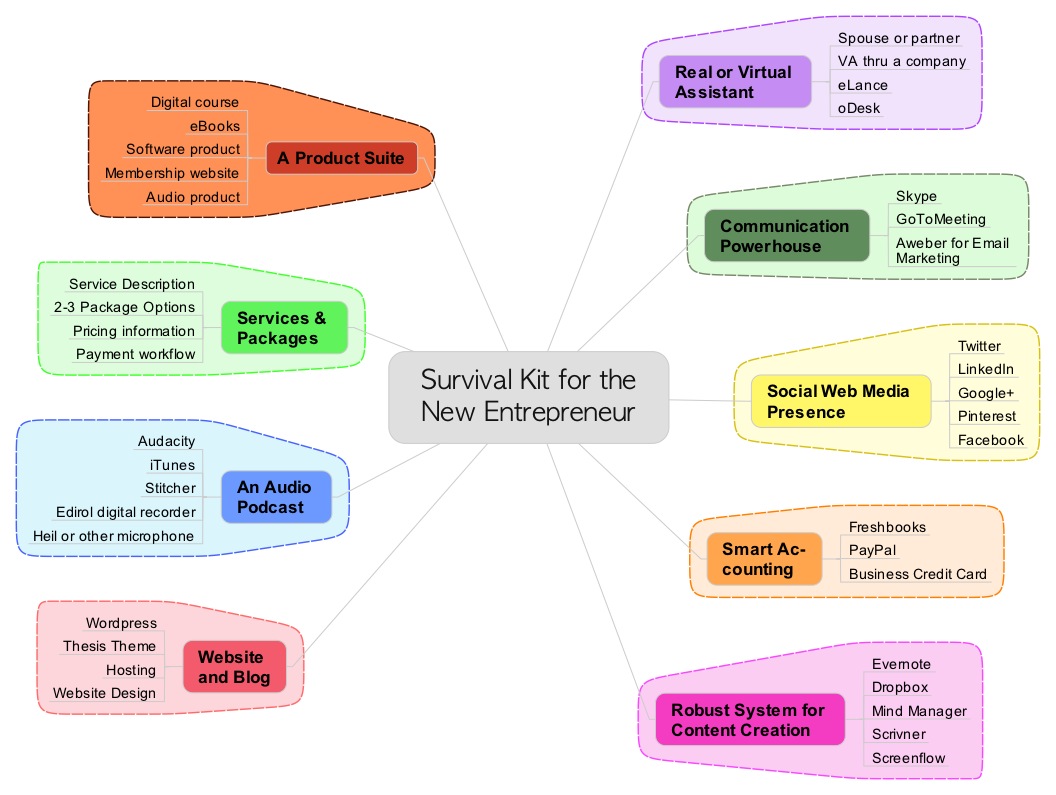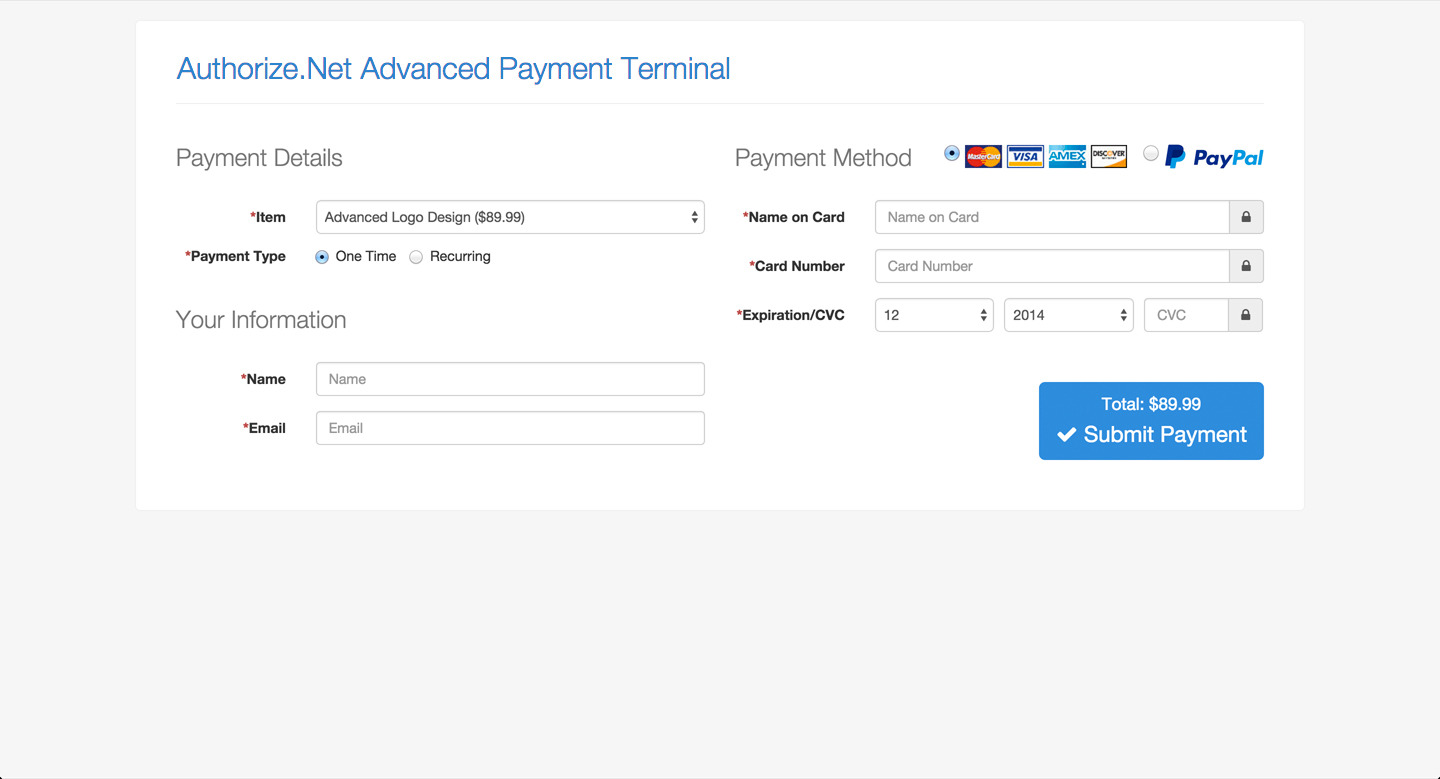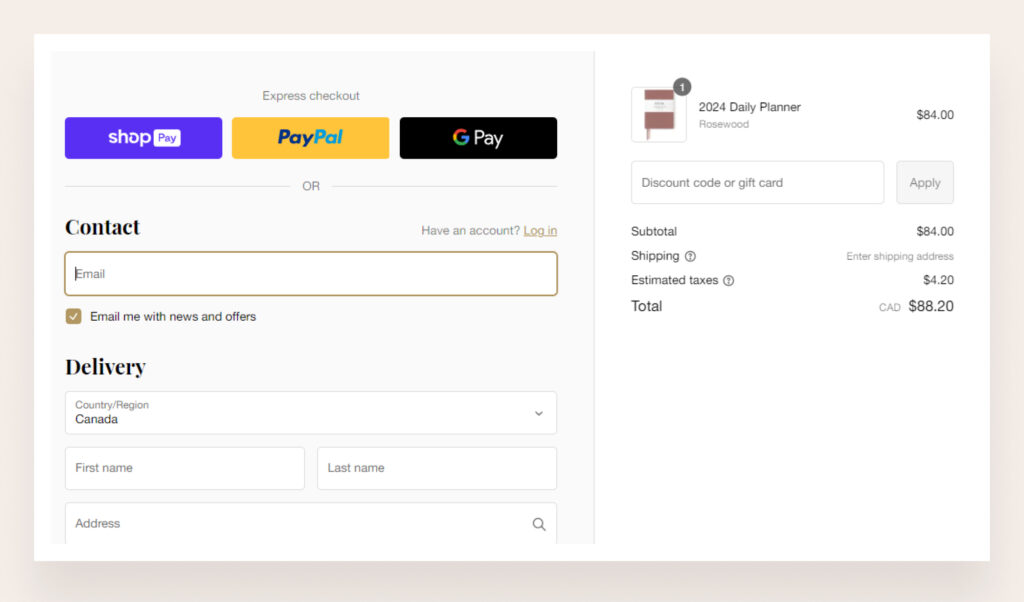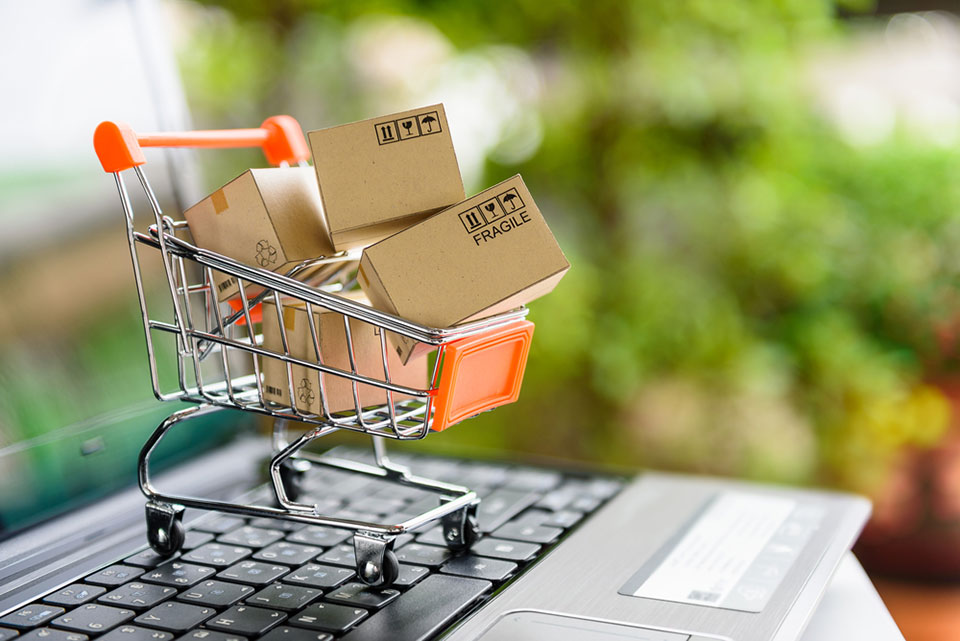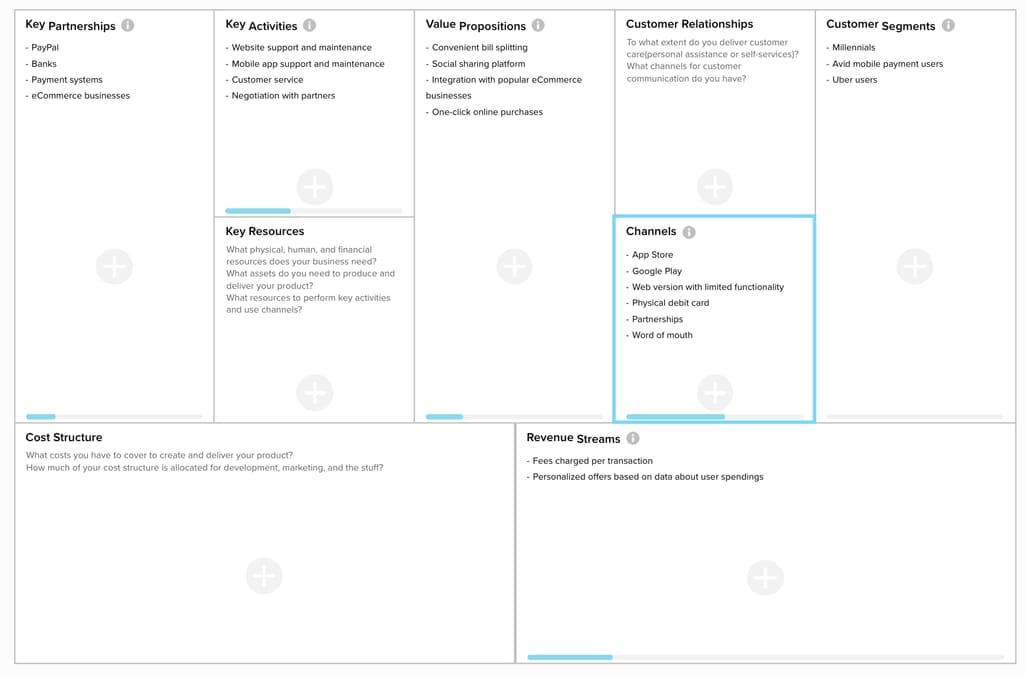
Published: Dec 2, 2024
10 Must-Have Features for Killer E-commerce Platforms in 2025
10 Must-Have Features for Killer E-commerce Platforms in 2025
I’ve seen my fair share of online stores crash and burn. Trust me, it’s not pretty. But here’s the thing - with the right features, your e-commerce platform can go from zero to hero faster than you can say “add to cart”. So, let’s dive into the good stuff and get your online store rockin’ and rollin’!
TLDR: What features make an e-commerce platform successful in 2025?
1️⃣ What are the most crucial features for an e-commerce platform?
The top features include mobile responsiveness, secure payment gateways, personalized product recommendations, and seamless checkout processes. These elements ensure a smooth user experience, build trust, and boost conversions.
2️⃣ How do these features impact sales and customer satisfaction?
These features significantly improve user experience, leading to higher conversion rates and customer loyalty. For example, mobile-friendly designs can increase mobile sales by up to 30%, while personalized recommendations can boost overall sales by 10-30%.
3️⃣ Are there any new e-commerce features gaining traction in 2025?
Yes, emerging trends include AI-powered chatbots for 24/7 customer service, augmented reality for virtual product try-ons, and blockchain for enhanced security and transparency in transactions.
Table of Contents
- Top 10 E-commerce Platform Features
- Mobile Responsiveness: The Non-Negotiable Feature
- User-Generated Content: Harnessing the Power of Social Proof
- AI-Powered Chatbots: 24/7 Customer Service
- High-Quality Product Visuals: Selling with Your Eyes
- Easy Navigation and Search: Helping Customers Find What They Want
- Flexible Shipping Options: Meeting Customer Expectations
- Secure Payment Gateways: Building Trust with Customers
- Personalized Product Recommendations: The Sales Booster
- Streamlined Checkout Process: Reducing Cart Abandonment
- Data Analytics and Reporting: Making Informed Decisions
- Implementing These Features: Next Steps
- 1. Conduct a Site Audit
- 2. Prioritize Your Features
- 3. Choose the Right E-commerce Platform
- 4. Invest in Mobile Optimization
- 5. Implement Secure Payment Gateways
- 6. Set Up Product Recommendations
- 7. Streamline Your Checkout Process
- 8. Leverage User-Generated Content
- 9. Implement a Chatbot
- 10. Upgrade Your Product Visuals
- Implementation Challenges and Solutions
- Measuring Success
- Case Study:Allbirds

Top 10 E-commerce Platform Features
Hey there, e-commerce warriors! Ready to turn your online store into a sales powerhouse? Let’s dive into the top 10 features that’ll make your platform stand out in 2025. Trust me, I’ve seen these work wonders for countless businesses.
1. Mobile-First Design
- Over 70% of online shopping happens on mobile devices
- Ensures seamless browsing and purchasing on smartphones and tablets
- Boosts SEO rankings (Google loves mobile-friendly sites!)
2. Secure Payment Gateways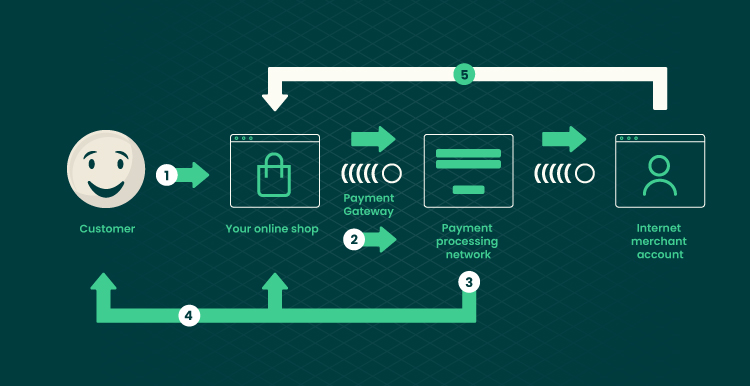
- Multiple options like PayPal, Stripe, and Square
- SSL certificates and PCI compliance are non-negotiable
- Builds trust with customers (no one likes to worry about their credit card info)
3. AI-Powered Product Recommendations
- Uses machine learning to suggest relevant products
- Can increase average order value by up to 30%
- Creates a personalized shopping experience (like having a personal shopper!)
4. One-Click Checkout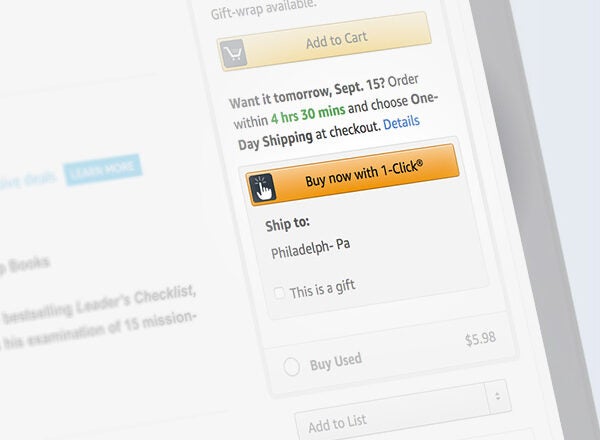
- Reduces cart abandonment rates dramatically
- Stores customer info for faster future purchases
- Originally patented by Amazon, now available for all e-commerce sites
5. User-Generated Content Integration
- Customer reviews, photos, and videos
- Increases social proof and trust
- Can boost conversion rates by up to 161% (that’s not a typo, folks!)
6. Chatbots and Live Chat
- 24/7 customer support without the hefty price tag
- Can handle up to 80% of routine customer queries
- Improves customer satisfaction and reduces support costs
7. Augmented Reality (AR) Try-On
- Virtual product testing for clothing, makeup, and furniture
- Reduces return rates by up to 35%
- Increases customer confidence in purchases (no more “will it look good on me?” worries)
8. Advanced Search Functionality
- Voice search compatibility
- Visual search options (upload a photo, find similar products)
- Filters and sorting to help customers find exactly what they want
9. Omnichannel Integration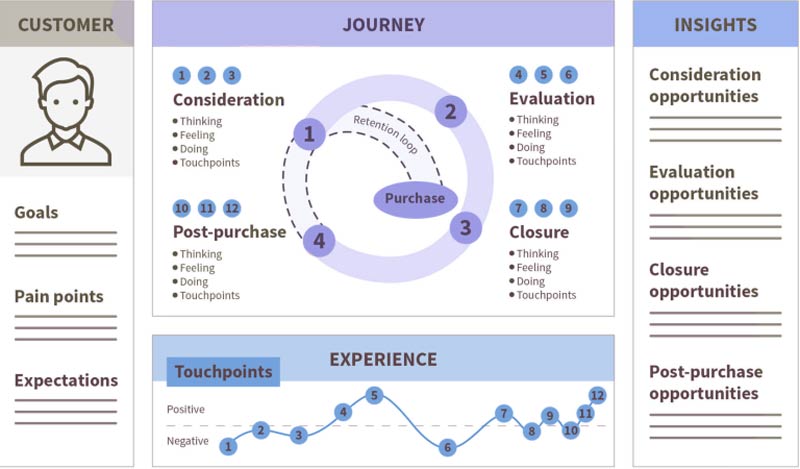
- Seamless experience across desktop, mobile, and physical stores
- Syncs inventory and customer data across all platforms
- Allows for features like buy online, pick up in-store (BOPIS)
10. Data Analytics Dashboard
- Real-time insights on sales, traffic, and customer behavior
- A/B testing capabilities for continuous improvement
- Helps make data-driven decisions to boost revenue
Comparison Table: Impact of E-commerce Features
| Feature | Potential ROI | Implementation Difficulty | Customer Satisfaction Boost |
|---|---|---|---|
| Mobile-First Design | 20-30% increase in mobile conversions | Medium | High |
| Secure Payment Gateways | 15-25% increase in completed transactions | Low | Very High |
| AI Product Recommendations | 10-30% increase in average order value | High | Medium |
| One-Click Checkout | 30-50% reduction in cart abandonment | Medium | High |
| User-Generated Content | Up to 161% increase in conversions | Low | High |
| Chatbots and Live Chat | 20-30% reduction in customer service costs | Medium | Medium |
| AR Try-On | Up to 35% reduction in returns | High | Very High |
| Advanced Search | 10-20% increase in conversion rates | Medium | High |
| Omnichannel Integration | 15-35% increase in customer lifetime value | High | Very High |
| Data Analytics Dashboard | Varies, but crucial for informed decisions | Medium | N/A (internal tool) |
Now, don’t feel overwhelmed! You don’t need to implement all these features overnight. Start with the ones that align best with your business goals and customer needs. Remember, a successful e-commerce platform is always evolving. Keep testing, learning, and improving, and you’ll be crushing those sales targets in no time!
Mobile Responsiveness: The Non-Negotiable Feature
Let’s face it, folks - if your e-commerce site isn’t mobile-friendly in 2025, you might as well be selling VHS tapes. Mobile shopping isn’t just a trend anymore; it’s the norm. Here’s why mobile responsiveness is an absolute must-have for your online store:
The Mobile Shopping Explosion
Statista reports that mobile e-commerce sales are expected to hit 72.9% of total e-commerce sales worldwide by 2025. That’s nearly three-quarters of all online purchases happening on smartphones and tablets!
A study by Google found that 53% of mobile users abandon sites that take longer than 3 seconds to load. Yikes!
Key Elements of Mobile-Friendly Design
-
- Adjusts seamlessly to different screen sizes
- No more pinching and zooming to read product descriptions
-
- Large, easy-to-tap buttons
- Swipe gestures for image galleries
Accelerated Mobile Pages (AMP)
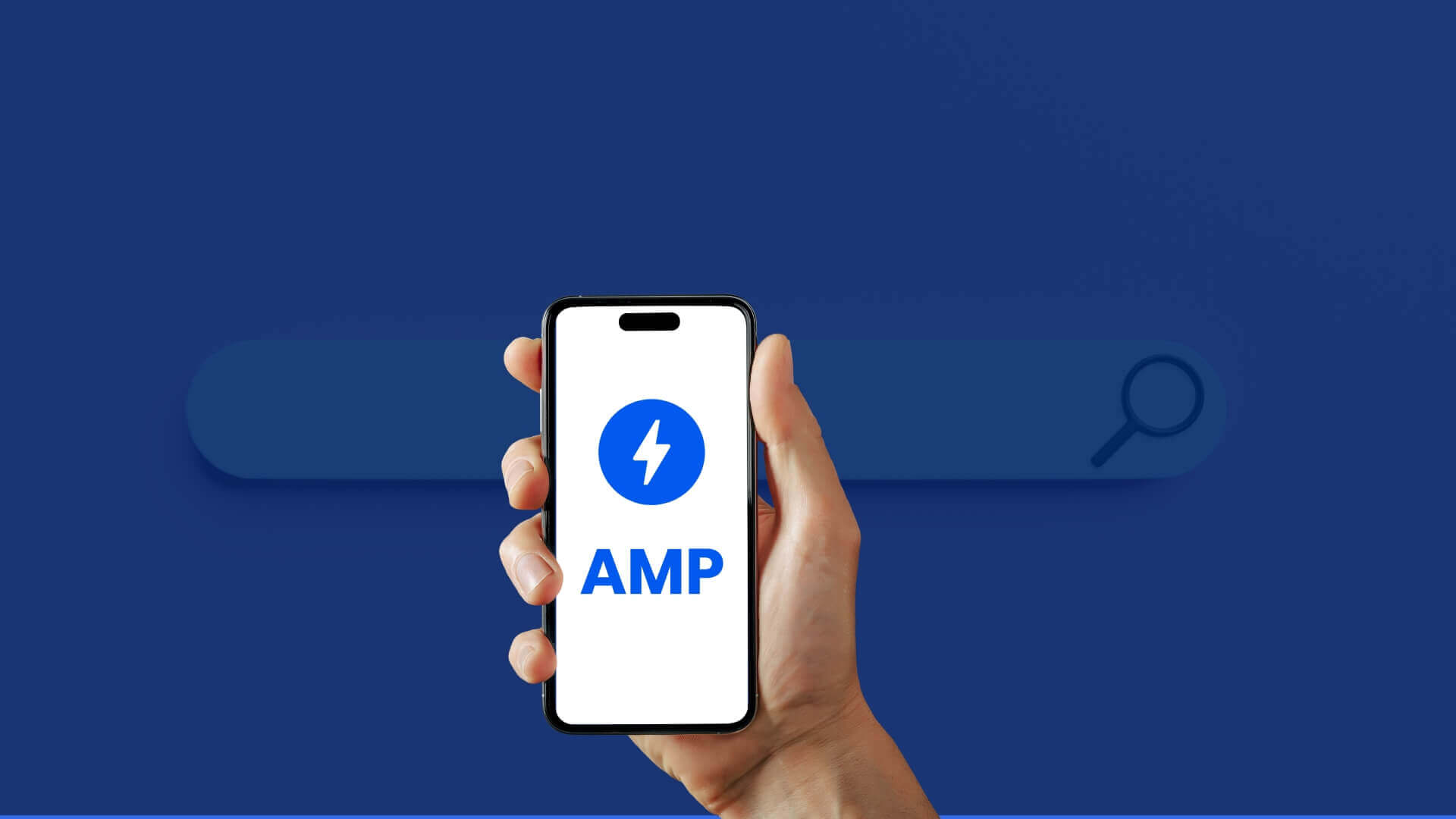
- Lightning-fast loading times
- Keeps impatient shoppers from bouncing
-
- Simplified forms with autofill
- Mobile wallet integration (Apple Pay, Google Pay)
Real-World Success Stories
Walmart saw a 98% increase in mobile orders after optimizing their mobile site. They focused on streamlining the checkout process and improving site speed.
Etsy reported a 30% increase in mobile conversion rates after implementing a mobile-first redesign. They prioritized search functionality and simplified navigation.
Mobile Optimization Tips
Speed is King
- Compress images using tools like TinyPNG
- Minimize HTTP requests
- Use a Content Delivery Network (CDN) for faster loading
Thumb-Friendly Design
- Place important elements in the “thumb zone”
- Avoid tiny buttons or closely-spaced links
Simplify, Simplify, Simplify
- Cut down on unnecessary text
- Use expandable sections for product details
- Implement a sticky “Add to Cart” button
Test, Test, Test
- Use tools like Google’s Mobile-Friendly Test
- Test on various devices and browsers
- Get real user feedback through beta testing
The Cost of Ignoring Mobile
Google uses mobile-first indexing, meaning they primarily use the mobile version of your site for ranking. No mobile optimization? Say goodbye to those sweet search rankings.
A study by Forrester found that 53% of customers are likely to abandon a purchase if they can’t find quick answers to their questions. A clunky mobile experience makes finding those answers a nightmare.
Remember, mobile responsiveness isn’t just about looking good on a small screen. It’s about creating a seamless, frustration-free shopping experience that keeps customers coming back. So, don’t skimp on mobile optimization - your bottom line will thank you!
User-Generated Content: Harnessing the Power of Social Proof
You know what’s better than telling potential customers how awesome your products are? Letting your existing customers do it for you! That’s where user-generated content (UGC) comes in, and it’s a game-changer for e-commerce success.
Why UGC Matters
-
- 92% of consumers trust recommendations from others, even people they don’t know, over branded content
- UGC is seen as more authentic and relatable than polished marketing materials
-
- Fresh, unique content helps boost search engine rankings
- User reviews often contain long-tail keywords that can improve organic search visibility
-
- Products with customer photos are 5x more likely to be purchased
- Reviews can increase conversions by up to 270%
Types of UGC to Implement
-
- Allow customers to rate products on a scale (usually 1-5 stars)
- Encourage detailed written reviews with pros and cons
User-Submitted Photos and Videos

- Let customers share images of products in use
- Implement a gallery of user-submitted content on product pages
-
- Enable customers to ask and answer questions about products
- This can reduce customer service inquiries and provide valuable insights
-
- Pull in posts from Instagram or Twitter that mention your brand or products
- Create a branded hashtag for customers to use when sharing their purchases
Best Practices for Implementing UGC
Make It Easy
- Simplify the review process with user-friendly forms
- Offer incentives like discount codes for leaving reviews or sharing photos
Moderate Wisely
- Use automated tools to filter out spam and inappropriate content
- Don’t delete negative reviews - respond to them professionally instead
Showcase UGC Prominently
- Feature customer photos on your homepage and product pages
- Create a dedicated “Customer Gallery” section on your site
Leverage Email Marketing
- Send follow-up emails asking for reviews after purchase
- Share top user-generated content in your newsletters
Case Studies: UGC Success Stories
-
- This beauty brand built its entire marketing strategy around UGC
- They feature customer selfies prominently on their website and social media
- Result: Grew from a small blog to a $1.2 billion company in just six years
-
- Implemented a “View It In Your Room” feature allowing customers to share photos of furniture in their homes
- Saw a 5x increase in likelihood of purchase for products with customer photos
Overcoming UGC Challenges
Quality Control
- Use AI-powered tools like Yotpo to automatically detect and flag low-quality or fake reviews
- Implement a verification system for “verified purchaser” reviews
Legal Considerations
- Always get permission before using customer photos in your marketing
- Create clear terms and conditions for UGC submissions
Negative Reviews
- Respond promptly and professionally to negative feedback
- Use negative reviews as an opportunity to showcase your customer service
UGC Analytics: Measuring Success
-
- Track how products with UGC perform compared to those without
- Measure the impact of different types of UGC (photos vs. text reviews)
-
- Monitor likes, shares, and comments on UGC across platforms
- Track how often customers use your branded hashtags
-
- Use AI-powered tools to analyze the overall sentiment of customer reviews
- Identify common themes in positive and negative feedback
Remember, UGC isn’t just about collecting reviews - it’s about building a community around your brand. When done right, it can turn your customers into your most powerful marketing asset. So go ahead, give your customers the mic and watch your e-commerce success soar!
AI-Powered Chatbots: 24/7 Customer Service
Let’s face it, nobody likes waiting on hold for customer service. That’s where AI-powered chatbots come in, revolutionizing the way online stores handle customer inquiries. These digital assistants are changing the game, providing instant support around the clock.
Why Chatbots Are a Must-Have
Always-On Support
- 64% of customers expect 24/7 assistance, according to a Salesforce study
- Chatbots never sleep, take breaks, or call in sick
Lightning-Fast Response Times
- Chatbots can handle multiple inquiries simultaneously
- No more frustrated customers waiting for human agents to become available
Cost-Effective Solution
- Can reduce customer service costs by up to 30%, as reported by IBM
- Frees up human agents to handle more complex issues
Key Features of Effective E-commerce Chatbots
Natural Language Processing (NLP)
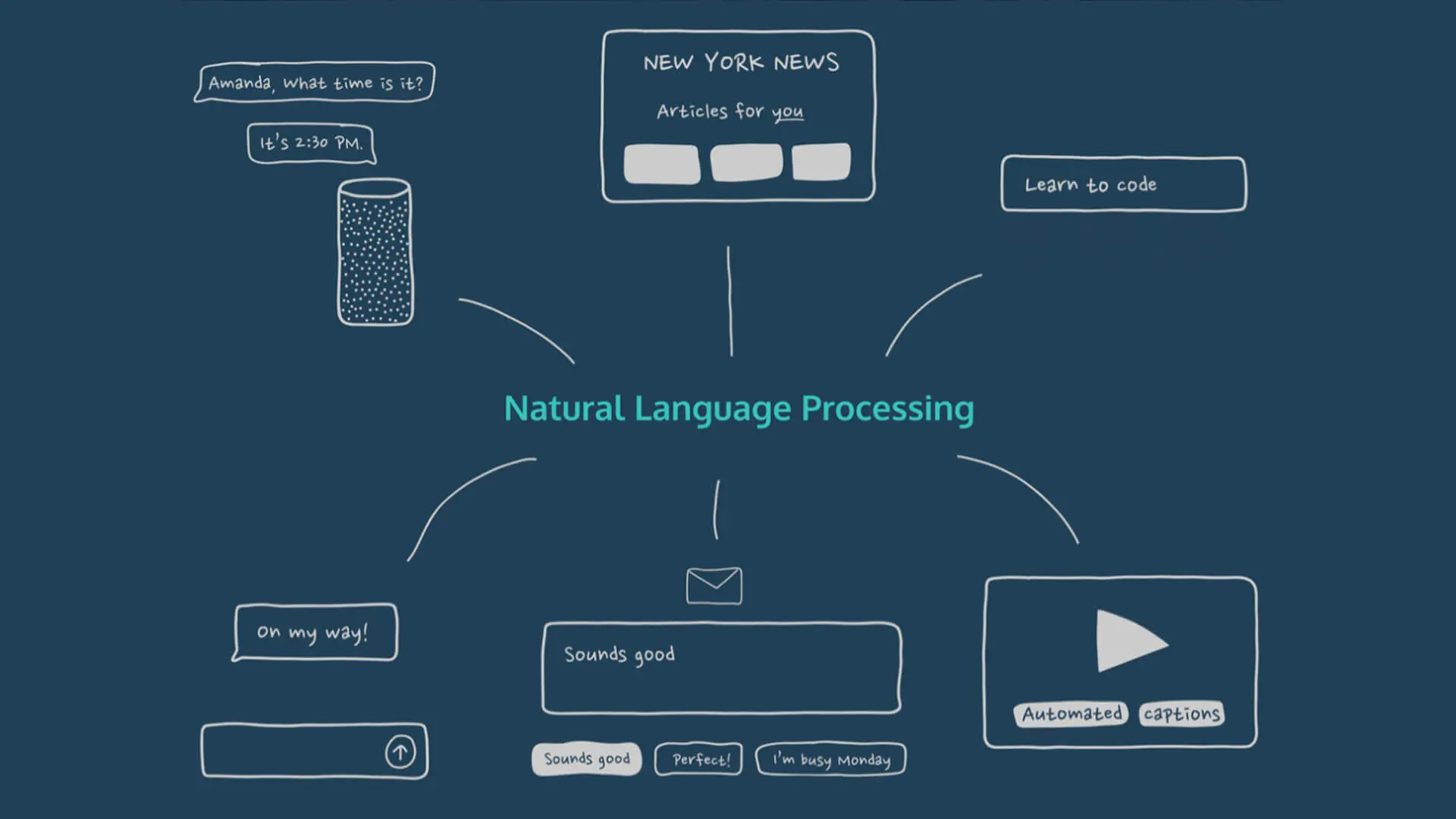
- Understands and responds to customer queries in a human-like manner
- Continuously improves through machine learning
Personalized Recommendations
- Suggests products based on customer browsing history and preferences
- Can increase average order value by up to 20%
Order Tracking Integration
- Provides real-time updates on order status
- Reduces “Where’s my order?” inquiries to human agents
Multilingual Support
- Serves a global customer base in their preferred language
- Expands your market reach without hiring multilingual staff
Real-World Success Stories
-
- Implemented a chatbot on Kik that acts as a personal stylist
- Asks customers about their style preferences and suggests outfits
- Result: 70% of chatbot users made purchases through the bot
-
- Launched a Facebook Messenger bot for booking makeover appointments
- Increased makeover bookings by 11%
- Reduced no-shows for appointments by sending reminders through the bot
Implementing Chatbots: Best Practices
Start Simple
- Begin with common FAQs and basic order inquiries
- Gradually expand capabilities based on customer interactions
Maintain a Human Touch
- Use casual, friendly language that matches your brand voice
- Include humor where appropriate (but be careful with sarcasm!)
Seamless Handoff to Human Agents
- Recognize when a query is too complex and transfer to a human agent
- Provide the human agent with chat history for context
Continuous Improvement
- Regularly analyze chatbot conversations to identify areas for improvement
- Update your bot’s knowledge base with new products and policies
Overcoming Chatbot Challenges
Limited Understanding
- Use machine learning to improve comprehension over time
- Implement a feedback loop where customers can rate bot responses
Customer Frustration
- Clearly communicate that they’re talking to a bot, not a human
- Provide an easy option to reach a human agent if needed
Data Privacy Concerns
Measuring Chatbot Success
Customer Satisfaction Scores
- Implement post-chat surveys to gauge satisfaction
- Compare scores between bot and human interactions
Resolution Rate
- Track the percentage of inquiries resolved without human intervention
- Aim for at least a 70% resolution rate to start
Average Handle Time
- Measure how quickly the bot resolves issues compared to human agents
- Look for significant time savings to justify the investment
The Future of AI Chatbots in E-commerce
Voice-Activated Shopping
- Integration with smart speakers like Amazon Echo and Google Home
- Enables hands-free shopping experiences
Predictive Customer Service
- Anticipates customer needs based on browsing behavior
- Proactively offers assistance before the customer asks
Emotion Recognition
- Analyzes customer sentiment to provide more empathetic responses
- Escalates to human agents when detecting high levels of frustration
Remember, chatbots aren’t meant to replace human customer service entirely. They’re a powerful tool to enhance your customer support, freeing up your human agents to handle more complex issues with the personal touch that only humans can provide. When implemented thoughtfully, AI-powered chatbots can significantly boost customer satisfaction and your bottom line. So, are you ready to welcome your new digital team member?
High-Quality Product Visuals: Selling with Your Eyes
Let’s get real - we’re visual creatures. In the world of e-commerce, your product photos and videos are doing the heavy lifting when it comes to convincing customers to hit that “Buy Now” button. Here’s why nailing your visual content is crucial and how to do it right:
The Power of Visual Content
- A study by Etsy found that 90% of shoppers say photo quality is the most important factor in an online sale
- Adobe reports that posts with images produce 650% higher engagement than text-only posts
Essential Types of Product Visuals
High-Resolution Product Photos

- Crystal clear, zoomable images from multiple angles
- Show scale with common objects for size reference
- Include lifestyle shots to help customers envision using the product
-
- Allow customers to rotate and examine products from all sides
- Reduces uncertainty and lowers return rates
-
- Demonstrate product features and usage
- Can increase conversion rates by up to 80%, according to Wyzowl
-
- Encourage customers to share photos and videos using your products
- Builds trust and provides social proof
Best Practices for E-commerce Visuals
Consistency is Key
- Use a consistent style and background across all product photos
- Maintain brand colors and aesthetics in all visual content
Show, Don’t Tell
- Use infographics to highlight key product features
- Create comparison charts for product variants
Optimize for Mobile
- Ensure images load quickly on mobile devices
- Use responsive design to adjust image sizes for different screens
Accessibility Matters
- Include alt text for all images to improve SEO and accessibility
- Use captions and transcripts for video content
Tools for Creating Stellar Product Visuals
-
- Professional-grade photo editing software
- Great for batch editing and maintaining consistency
-
- User-friendly design tool for creating infographics and social media visuals
- Offers templates tailored for e-commerce
-
- Easy-to-use video creation platform
- Perfect for making product demo videos without professional videography skills
-
- 360-degree product photography tool
- Allows for easy creation of interactive product views
Case Studies: Visual Content Success Stories
-
- Implemented a virtual try-on feature using AR technology
- Saw a 30% increase in conversion rates for customers who used the feature
-
- Created the IKEA Place app, allowing customers to visualize furniture in their homes
- The app has been downloaded over 2 million times, significantly reducing returns
Overcoming Visual Content Challenges
Budget Constraints
- Start with a DIY approach using smartphone cameras and natural light
- Gradually invest in better equipment as your business grows
Technical Limitations
- Use cloud-based tools like Cloudinary for image optimization and delivery
- Implement lazy loading to improve page speed
Keeping Content Fresh
- Create a content calendar for regular visual updates
- Leverage seasonal themes and trending topics in your visuals
Measuring the Impact of Visual Content
Engagement Metrics
- Track time spent on product pages with enhanced visuals
- Monitor click-through rates on product images in email campaigns
Conversion Rates
- Compare conversion rates before and after implementing new visual content
- A/B test different types of visuals to see which perform best
Customer Feedback
- Use surveys to gather opinions on your product visuals
- Monitor social media mentions and shares of your visual content
Remember, in the world of e-commerce, your visuals are your virtual storefront. They’re the first thing customers see, and often the deciding factor in whether they’ll make a purchase. So don’t skimp on your visual content - it’s an investment that pays off in higher conversion rates and happier customers. Now go out there and make your products look so good, customers can’t help but click “Add to Cart”!
Easy Navigation and Search: Helping Customers Find What They Want
Let’s face it, if customers can’t find what they’re looking for on your site, they’re not gonna stick around. That’s why nailing your navigation and search functionality is crucial for e-commerce success. Here’s how to make sure your customers can find exactly what they want, faster than you can say “add to cart”:
The Power of Intuitive Navigation
- A study by Forrester Research found that 50% of potential sales are lost because users can’t find the information they’re looking for
- Nielsen Norman Group reports that users spend an average of 5.94 seconds looking at a website’s main navigation before moving on
Key Elements of User-Friendly Navigation
-
- Organize products into logical, easy-to-understand categories
- Use dropdown menus for subcategories to avoid overwhelming users
-
- Shows users their current location within your site hierarchy
- Allows for easy backtracking and exploration
-
- Keeps main navigation visible as users scroll down the page
- Reduces friction when moving between pages or categories
Hamburger Menu for Mobile
- Compact menu icon that expands to show navigation options
- Saves precious screen real estate on mobile devices
Supercharging Your Site Search
-
- Predicts user queries as they type
- Helps users find products even if they don’t know the exact name
-
- Allows users to filter results by attributes like size, color, price range
- Particularly useful for stores with large product catalogs
-
- Understands user intent, even with misspellings or colloquial terms
- Provides more accurate results for conversational queries
-
- Allows users to search by uploading images
- Great for fashion and home decor retailers
Best Practices for Navigation and Search
Keep It Simple
- Limit main navigation categories to 7 or fewer
- Use clear, concise labels for categories and search buttons
Optimize for Mobile
- Ensure touch-friendly navigation elements
- Implement a prominent search bar on mobile layouts
Personalize the Experience
- Use AI to tailor search results based on user behavior
- Highlight recently viewed or related items in navigation
Provide Clear Feedback
- Show the number of results for each search query
- Offer suggestions for zero-result searches
Tools to Enhance Navigation and Search
-
- AI-powered search and discovery platform
- Offers features like typo tolerance and personalized results
-
- Open-source search engine
- Highly customizable for complex product catalogs
-
- Website analytics and optimization tool
- Helps identify and fix navigation issues
-
- Heatmapping and user behavior analytics
- Visualizes how users navigate your site
Real-World Success Stories
-
- Implemented a “Shop by Color” feature in their search functionality
- Saw a 10% increase in user engagement on search results pages
-
- Revamped their site search with visual product previews and dynamic filters
- Experienced a 35% increase in conversion rates from search
Overcoming Navigation and Search Challenges
Information Overload
- Use progressive disclosure to reveal more options as needed
- Implement a “featured categories” section for popular items
Mobile Limitations
- Design a separate, streamlined navigation for mobile users
- Prioritize search functionality on smaller screens
Scalability
- Choose a robust search solution that can handle growing product catalogs
- Regularly audit and update your site structure as you add new categories
Measuring Navigation and Search Success
Search Analytics
- Track popular search terms and zero-result queries
- Monitor click-through rates on search results
Navigation Path Analysis
- Use tools like Google Analytics to visualize user journeys
- Identify and optimize common navigation paths
User Testing
- Conduct regular usability tests to gather qualitative feedback
- Use A/B testing to compare different navigation layouts or search features
Remember, your navigation and search functionality are like the friendly store assistant of your e-commerce site. They should guide customers effortlessly to what they’re looking for, anticipate their needs, and maybe even surprise them with something they didn’t know they wanted. Get these elements right, and you’ll see happier customers, lower bounce rates, and a healthier bottom line. Now, go make your site so easy to navigate, even your grandma could shop on it blindfolded!
Flexible Shipping Options: Meeting Customer Expectations
Let’s face it - in the world of e-commerce, shipping can make or break your business. I’ve seen countless online stores tank because they couldn’t get their shipping game right. But fear not! I’m here to spill the beans on how to nail your shipping strategy and keep those customers coming back for more.
Why Flexible Shipping Matters
- A Baymard Institute study found that 50% of US online shoppers have abandoned a cart due to high shipping costs
- Shopify reports that 59% of consumers want fast and cheap delivery options
Key Shipping Options to Offer
-
- The holy grail of e-commerce shipping
- Set a minimum order value to maintain profitability
-
- Allows customers to pick up orders from physical locations
- Great for reducing shipping costs and increasing foot traffic
-
- Simplifies the checkout process
- Encourages larger orders
Implementing Flexible Shipping: Best Practices
Use Real-Time Carrier Rates
Offer Multiple Delivery Speeds
- Give customers the choice between economy and express options
- Use a table to clearly display delivery times and costs
Implement Local Delivery Zones
- Set up geofenced areas for special delivery options
- Great for perishable goods or bulky items
Consider Subscription-Based Shipping
- Take a page from Amazon Prime’s playbook
- Encourages customer loyalty and repeat purchases
Case Studies: Shipping Success Stories
-
- Offers free shipping on orders over $49
- Saw a 45% increase in net sales after implementing this policy
-
- Leveraged their physical stores for same-day pickup
- Reported that 40% of online orders are now picked up in-store
Overcoming Shipping Challenges
High Shipping Costs
- Negotiate bulk rates with carriers
- Use packaging optimization software to reduce dimensional weight
Meeting Delivery Promises
- Set realistic expectations with clear delivery timelines
- Use order management systems to streamline fulfillment
International Shipping Complexities
- Partner with global logistics providers like DHL
- Use customs clearance services to simplify cross-border shipping
Measuring Shipping Success
Cart Abandonment Rate
- Track how shipping options impact checkout completion
- Aim for an abandonment rate below 70% (the industry average)
Average Order Value (AOV)
- Monitor how free shipping thresholds affect AOV
- Look for at least a 30% increase in AOV with strategic thresholds
Customer Lifetime Value (CLV)
- Analyze how shipping options impact repeat purchases
- Subscription-based shipping should increase CLV by at least 20%
The Future of E-commerce Shipping
-
- Companies like Amazon are investing heavily in this technology
- Could revolutionize last-mile delivery in urban areas
-
- Eco-friendly packaging and carbon-neutral delivery options
- Appeals to environmentally conscious consumers
-
- Using AI to predict orders and pre-ship items to nearby warehouses
- Could drastically reduce delivery times
Remember, your shipping strategy isn’t just about getting products from A to B - it’s a crucial part of your customer experience. Get it right, and you’ll see happier customers, fewer abandoned carts, and a healthier bottom line. So go ahead, flex those shipping muscles and watch your e-commerce empire grow!
Secure Payment Gateways: Building Trust with Customers
Let’s get real - nobody’s gonna hand over their hard-earned cash if they don’t trust your payment system. That’s why nailing your secure payment gateway game is crucial for e-commerce success. I’ve seen too many online stores crash and burn because customers got spooked at checkout. Let’s dive into how you can build ironclad trust with your payment setup.
Why Payment Security is Non-Negotiable
- A Baymard Institute study found that 17% of US online shoppers have abandoned a cart due to security concerns
- Statista reports that 19% of consumers won’t shop with a retailer again after a security breach
Must-Have Payment Gateway Features
-
- That little padlock icon in the address bar? It’s a big deal.
- Encrypts data between the customer’s browser and your server
-
- It’s not just a fancy acronym - it’s a set of security standards you MUST meet
- Protects cardholder data and reduces fraud risk
-
- Replaces sensitive card data with unique identification symbols
- Keeps customer info safe even if your system is compromised
Two-Factor Authentication (2FA)
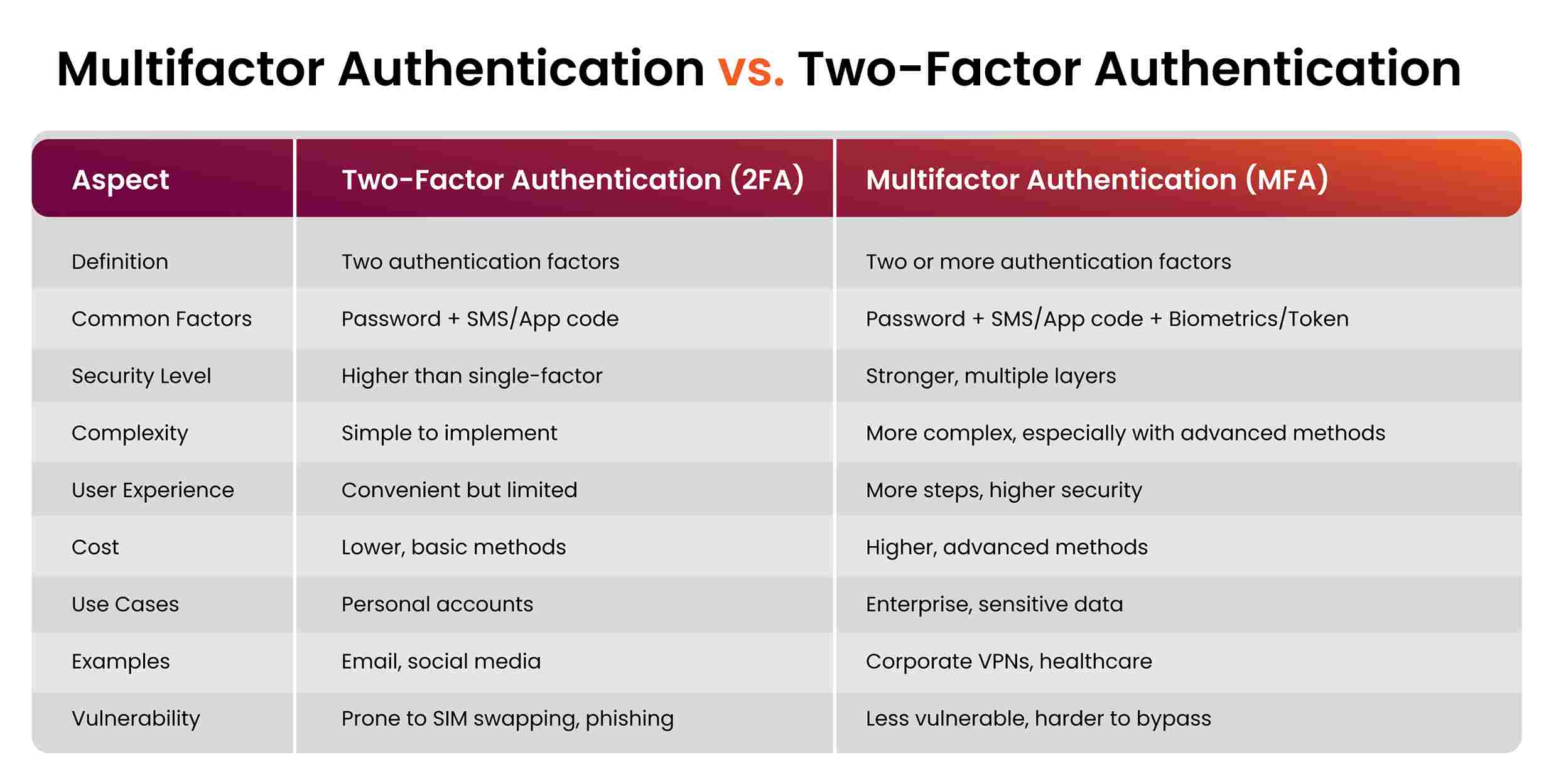
- Adds an extra layer of security beyond just passwords
- Can reduce account takeover fraud by up to 99%, according to Microsoft
Top Payment Gateway Options
-
- Known for its developer-friendly API and robust security features
- Offers built-in fraud prevention tools
-
- The OG of online payments, trusted by millions
- Great for international transactions
-
- Seamless integration between online and in-person sales
- Offers next-day deposits for improved cash flow
-
- One of the oldest and most reliable payment gateways
- Advanced fraud detection suite included
Implementing Secure Payments: Best Practices
Offer Multiple Payment Options
- Include credit cards, digital wallets, and buy now, pay later services
- Apple Pay and Google Pay are must-haves for mobile shoppers
Keep Software Updated
- Regularly patch your e-commerce platform and plugins
- Outdated software is like leaving your front door wide open
Implement Address Verification Service (AVS)
- Checks if the billing address matches the one on file with the card issuer
- Can reduce fraudulent transactions by up to 30%
Use Clear Security Indicators
- Display trust badges from recognized security providers
- Highlight your SSL certificate and PCI compliance
Case Studies: Payment Security Success Stories
-
- Implemented a multi-layered fraud prevention system
- Reduced fraud rates by 80% while approving more legitimate orders
-
- Introduced two-factor authentication for all accounts
- Saw a 50% reduction in account takeover attempts
Overcoming Payment Security Challenges
Balancing Security and User Experience
- Use progressive security measures based on transaction risk
- Implement biometric authentication for mobile apps
Staying Ahead of Fraudsters
- Invest in machine learning-based fraud detection tools
- Join industry forums to stay updated on the latest fraud trends
Managing International Transactions
- Use payment gateways with strong global presence
- Implement 3D Secure 2.0 for added protection on cross-border sales
Measuring Payment Security Success
Chargeback Rate
- Industry average is about 0.5-1% of transactions
- Aim for a rate below 0.3% with robust security measures
Conversion Rate at Checkout
- Track how security measures impact completion rates
- Look for at least a 5% increase after implementing trust indicators
Customer Feedback
- Regularly survey customers about their payment experience
- Use tools like Trustpilot to gather and display reviews
The Future of Secure Payments
-
- Decentralized ledgers could revolutionize payment security
- Companies like IBM are already developing blockchain-based payment systems
-
- Fingerprint and facial recognition for seamless, secure payments
- Mastercard is rolling out “pay by smile” technology
Artificial Intelligence in Fraud Detection
- AI can analyze patterns and flag suspicious activity in real-time
- Visa claims its AI-powered fraud detection prevented $25 billion in fraud in 2019
Remember, your payment gateway isn’t just a tool - it’s the guardian of your customers’ trust. Get it right, and you’ll see fewer abandoned carts, more repeat customers, and a rock-solid reputation. So lock it down tight, and watch your e-commerce dreams become reality!
Personalized Product Recommendations: The Sales Booster
Let’s get real - we’ve all fallen down the rabbit hole of “you might also like” suggestions. It’s not just you; it’s science! Personalized product recommendations are the secret sauce that can turn casual browsers into loyal customers. Let me break it down for you.
Why Personalization Matters
- McKinsey found that 35% of Amazon’s revenue comes from its recommendation engine. That’s huge!
- A study by Salesforce showed that 62% of consumers expect companies to send personalized offers or discounts based on items they’ve already purchased
How It Works: The Magic Behind the Curtain
-
- Recommends products based on similar users’ behaviors
- Think “Customers who bought this also bought…”
-
- Suggests items similar to what the user has liked before
- Great for introducing new products in familiar categories
-
- Combines multiple techniques for more accurate predictions
- Used by giants like Netflix to keep you binge-watching
Implementing Personalized Recommendations: Best Practices
Start with the Data
- Collect browsing history, purchase data, and demographics
- Use tools like Google Analytics to track user behavior
Make It Real-Time
- Update recommendations instantly as users browse
- Monetate found that real-time personalization can boost conversion rates by 26%
Test and Optimize
- A/B test different recommendation algorithms
- Use heat mapping tools like Hotjar to see how users interact with recommendations
Don’t Forget Mobile
- Optimize recommendation displays for smaller screens
- Consider using push notifications for personalized offers
Real-World Success Stories
-
- Implemented an AI-powered “Style Match” feature
- Saw a 220% increase in orders using personalized recommendations
-
- Created a “Beauty Insider” program with personalized product suggestions
- Increased average order value by 20% for program members
Overcoming Personalization Challenges
Data Privacy Concerns
The “Filter Bubble” Effect
- Balance personalized recommendations with diversity
- Include an “Explore” section to introduce users to new categories
Getting Started with Limited Data
- Use broad category-based recommendations for new users
- Implement a quick preference quiz during sign-up
Measuring the Impact of Personalization
Conversion Rate
- Track how many users click on and purchase recommended items
- Aim for at least a 10% increase in conversion rates
Average Order Value (AOV)
- Monitor how recommendations impact cart size
- Look for a 5-10% boost in AOV with effective personalization
Customer Lifetime Value (CLV)
- Analyze long-term purchasing patterns of users exposed to recommendations
- Personalization should increase CLV by at least 15%
The Future of Personalized Recommendations
Augmented Reality (AR) Integration
- Recommend products based on users’ real-world environments
- Perfect for furniture and home decor retailers
Voice-Activated Recommendations

- Integration with smart speakers for hands-free shopping
- “Hey Alexa, what should I add to my grocery list?”
-
- Using facial recognition to gauge reactions to products
- Still in early stages, but companies like Affectiva are pioneering this tech
Remember, personalized recommendations aren’t just about boosting sales (though that’s a sweet bonus). It’s about creating a tailored shopping experience that makes your customers feel seen and understood. Get it right, and you’ll have them coming back for more, telling their friends, and maybe even naming their firstborn after your brand. Okay, maybe not that last one, but you get the idea. Now go forth and personalize like a pro!
Streamlined Checkout Process: Reducing Cart Abandonment
Let’s face it - nobody likes a complicated checkout process. It’s like standing in a long, confusing line at the grocery store. You’ve got your cart full of goodies, but if that line looks too daunting, you might just bail and hit up the corner store instead. In the e-commerce world, we call this cart abandonment, and it’s the bane of every online retailer’s existence.
The Cart Abandonment Crisis
- Baymard Institute found that the average cart abandonment rate is a whopping 69.82%. That’s like 7 out of 10 customers walking out of your store at the last minute!
- A study by Forrester estimates that cart abandonment costs e-commerce businesses $18 billion annually. Ouch!
Key Elements of a Streamlined Checkout
-
- Condenses the entire process into a single, easy-to-navigate page
- Can reduce checkout abandonment by up to 21.8%
-
- Allows customers to purchase without creating an account
- 35% of cart abandonments occur because the site wanted users to create an account
-
- Shows customers how far along they are in the checkout process
- Reduces uncertainty and keeps customers moving forward
-
- Ensures a smooth experience on smartphones and tablets
- Mobile accounts for 72.9% of e-commerce sales, according to Statista
Best Practices for Streamlined Checkout
Minimize Form Fields
- Only ask for essential information
- Use autofill and address lookup tools to speed up the process
Offer Multiple Payment Options
- Include popular methods like PayPal, Apple Pay, and Google Pay
- 7% of customers abandon carts if their preferred payment method isn’t available
Clear Error Messages
- Highlight form errors in real-time
- Provide specific instructions on how to correct mistakes
Trust Signals
- Display security badges and SSL certificates
- Show customer reviews and ratings to build confidence
Real-World Success Stories
-
- Implemented a progress bar and simplified their checkout process
- Saw a 50% reduction in cart abandonment rate
-
- Added a guest checkout option and streamlined their mobile checkout
- Experienced a 20% increase in mobile conversions
Overcoming Checkout Challenges
Hidden Costs
- Be upfront about shipping fees and taxes early in the process
- Consider offering free shipping thresholds to encourage larger purchases
Performance Issues
- Optimize page load times, especially on mobile
- Use tools like Google PageSpeed Insights to identify and fix performance bottlenecks
Security Concerns
- Implement SSL encryption and display security badges prominently
- Educate customers about your security measures in simple terms
Measuring Checkout Success
Checkout Abandonment Rate
- Track the percentage of users who start but don’t complete checkout
- Aim for a rate below 65% (better than the industry average)
Average Order Value (AOV)
- Monitor how checkout optimizations impact AOV
- Look for at least a 5-10% increase after implementing improvements
Conversion Rate
- Measure the percentage of visitors who complete a purchase
- A good e-commerce conversion rate is between 2-3%
The Future of E-commerce Checkout
-
- Using fingerprints or facial recognition for faster, more secure checkout
- Amazon One is pioneering palm-based payments in physical stores
-
- Integration with smart speakers for hands-free ordering
- “Alexa, reorder my favorite shampoo” could become the new norm
Augmented Reality (AR) Try-Before-You-Buy
- Virtual product trials integrated into the checkout process
- Great for reducing returns in fashion and home decor sectors
Remember, your checkout process is the final hurdle between a browsing session and a sale. Make it as smooth as butter, and you’ll see those conversion rates soar. So go ahead, streamline that checkout, and watch those abandoned carts turn into happy customers!
Data Analytics and Reporting: Making Informed Decisions
Let’s get real - in the e-commerce game, flying blind is a recipe for disaster. That’s where data analytics and reporting come in. They’re not just fancy buzzwords; they’re the secret sauce that can take your online store from meh to mega-successful. Let’s dive into how you can harness the power of data to skyrocket your e-commerce success.
Why Data Analytics Matters in E-commerce
- McKinsey reports that data-driven organizations are 23 times more likely to acquire customers and 6 times more likely to retain them
- A study by Forrester found that insights-driven businesses grow at an average of more than 30% annually
Key Metrics to Track
-
- The percentage of visitors who make a purchase
- Industry average is 2-3%, but aim higher!
-
- Total revenue divided by number of orders
- Increase this to boost revenue without needing more traffic
-
- The total worth of a customer over their entire relationship with your brand
- Focus on increasing this for sustainable growth
-
- The percentage of shoppers who add items to cart but don’t complete the purchase
- Industry average is around 70% - yikes!
Customer Acquisition Cost (CAC)
- How much it costs to gain a new customer
- Keep this lower than CLV for profitability
Essential Analytics Tools
-
- The gold standard for website analytics
- Free and packed with features
-
- Heatmaps and user recordings
- See exactly how visitors interact with your site
-
- Focused on customer behavior analytics
- Great for understanding the customer journey
-
- Powerful data visualization tool
- Turn complex data into easy-to-understand visuals
Implementing Data-Driven Strategies
Personalization
- Use browsing and purchase history to tailor product recommendations
- Amazon attributes 35% of its revenue to personalized recommendations
Dynamic Pricing
- Adjust prices based on demand, competition, and customer segments
- Uber uses this strategy with its surge pricing model
Inventory Optimization
- Use predictive analytics to forecast demand
- Reduce stockouts and overstock situations
Customer Segmentation
- Group customers based on behavior and preferences
- Tailor marketing efforts for each segment
Real-World Success Stories
-
- Used data analytics to reduce returns by 5%
- Saved millions in shipping and restocking costs
-
- Leverages data to personalize content recommendations
- Estimates that its recommendation system saves $1 billion per year in customer retention
Overcoming Data Challenges
Data Overload
- Focus on actionable metrics that align with business goals
- Use dashboards to visualize key performance indicators (KPIs)
Data Privacy Concerns
Integrating Multiple Data Sources
Measuring Analytics Success
Return on Investment (ROI) of Analytics
- Track the impact of data-driven decisions on revenue and costs
- Aim for at least a 10x return on your analytics investment
Data Adoption Rate
- Monitor how many team members actively use analytics tools
- Strive for 100% adoption across relevant departments
Decision Speed
- Measure how quickly you can turn data into action
- Reduce time-to-insight to gain a competitive edge
Remember, data analytics isn’t just about collecting numbers - it’s about turning those numbers into actionable insights that drive your business forward. It’s like having a crystal ball that shows you exactly what your customers want and how to give it to them. So dive into your data, find those golden nuggets of insight, and watch your e-commerce store soar to new heights. Just don’t forget to thank your friendly neighborhood data scientist when you’re rolling in the dough!
Implementing These Features: Next Steps
Alright, e-commerce warriors, you’ve got the lowdown on what makes a killer online store. Now it’s time to roll up your sleeves and get to work! Here’s your roadmap for turning those must-have features into reality:
1. Conduct a Site Audit
- Take a hard look at your current setup
- Identify which features you’re missing or need improvement
- Use tools like Google PageSpeed Insights to check your site’s performance
2. Prioritize Your Features
- You can’t do everything at once, so make a game plan
- Start with the low-hanging fruit that’ll give you the biggest bang for your buck
- Consider using a decision matrix to weigh impact vs. effort
3. Choose the Right E-commerce Platform
- If you’re starting from scratch, pick a platform that supports your must-have features
- Popular options include Shopify, WooCommerce, and Magento
- Consider scalability and integration capabilities
4. Invest in Mobile Optimization
- Start with a responsive design theme
- Test your site on various devices using tools like BrowserStack
- Optimize images and streamline your code for faster mobile loading
5. Implement Secure Payment Gateways
- Partner with trusted providers like PayPal or Stripe
- Ensure PCI DSS compliance
- Display security badges prominently to build trust
6. Set Up Product Recommendations
- Use plugins or built-in features of your e-commerce platform
- Start with simple “frequently bought together” recommendations
- Gradually implement more sophisticated AI-driven suggestions
7. Streamline Your Checkout Process
- Reduce form fields to the bare minimum
- Offer guest checkout options
- Implement progress indicators to show customers where they are in the process
8. Leverage User-Generated Content
- Encourage customer reviews with post-purchase emails
- Create a branded hashtag for social media sharing
- Display user photos on product pages (with permission, of course!)
9. Implement a Chatbot
- Start with a simple FAQ bot using platforms like MobileMonkey or ManyChat
- Train your bot with your most common customer queries
- Set up clear escalation paths to human support when needed
10. Upgrade Your Product Visuals
- Invest in professional product photography
- Use tools like Canva for creating infographics and lifestyle images
- Implement 360-degree product views for key items
Implementation Challenges and Solutions
Budget Constraints
- Start with free or low-cost solutions and upgrade as you grow
- Prioritize features that directly impact sales and customer satisfaction
Technical Limitations
- Consider hiring a freelance developer for complex implementations
- Look for no-code or low-code solutions for simpler features
Team Resistance
- Provide training and resources for your team to adapt to new systems
- Clearly communicate the benefits of each new feature
Measuring Success
Key Performance Indicators (KPIs)

- Track metrics like conversion rate, average order value, and customer lifetime value
- Use tools like Google Analytics for in-depth data analysis
A/B Testing
- Test new features against your current setup
- Use platforms like Optimizely for easy split testing
Customer Feedback
- Conduct surveys using tools like SurveyMonkey
- Monitor social media and review sites for unsolicited feedback
Case Study:Allbirds
This sustainable footwear brand nailed their e-commerce implementation:
- Focused on high-quality product visuals and user-generated content
- Implemented a hassle-free return policy to build trust
- Used chatbots for 24/7 customer service
Result: Grew from a startup to a $1.4 billion valuation in just 4 years
Remember, implementing these features isn’t a one-and-done deal. It’s an ongoing process of testing, learning, and improving. Keep your ear to the ground for new trends and technologies, and don’t be afraid to pivot when something’s not working.
Now, go forth and conquer the e-commerce world! Your customers (and your bank account) will thank you.

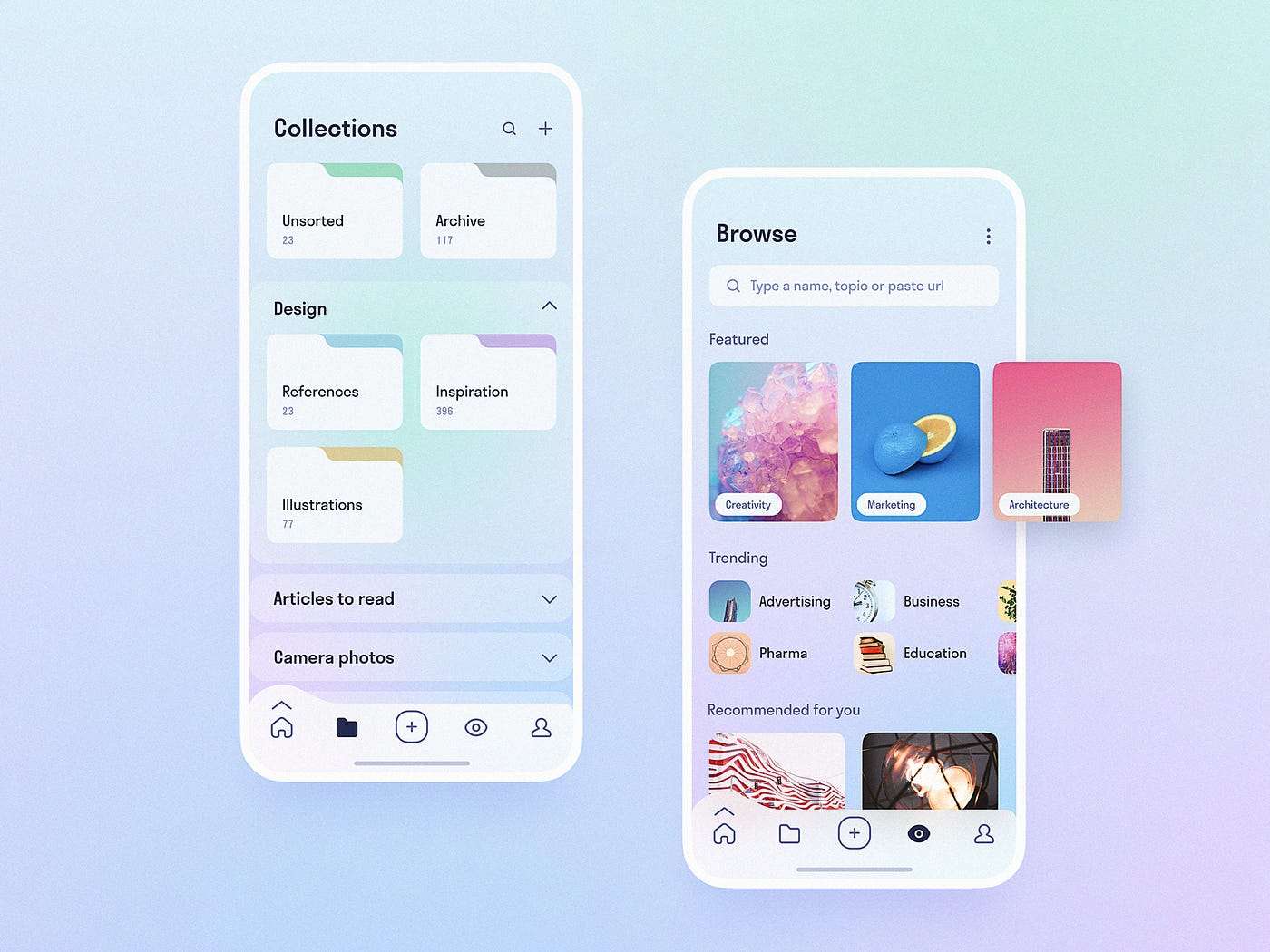
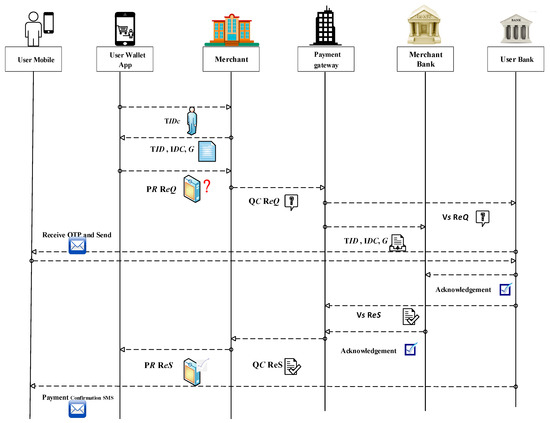

-details.jpg)







